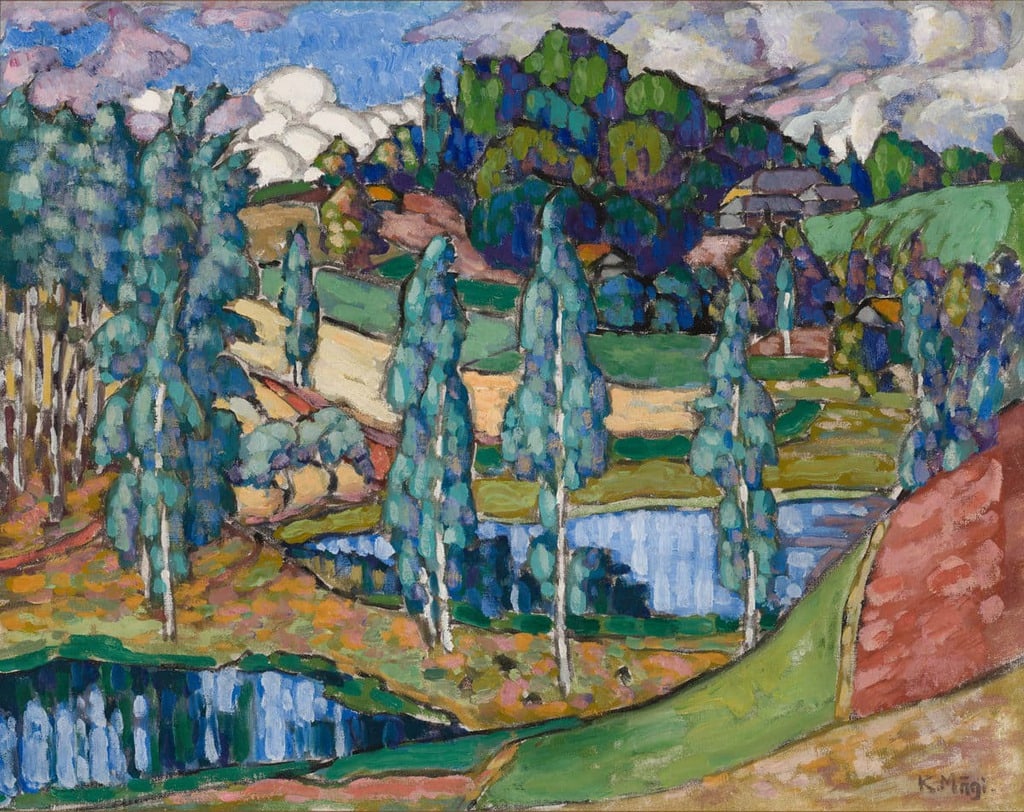
Konrad Mägi spent the summers of 1916 and 1917 at the home of his good friend Martin Taevere in Kasaritsa, Võru County. Taevere was a Supreme Court justice, but also a painter. Especially the summer of 1916 was very inspiring for Mägi. Taevere has recalled how Mägi went on painting excursions every day: “If a scene or harmony of colours in the landscape captivated him – he stopped right away, sat down and quickly started flailing with his brushes.” In this way he created 2-3 sketches per day, which he later completed in the studio.
Martin Taevere has recalled: “He became annoyed when I sometimes expressed my doubts about his being ill. How could he have been ill when it was difficult to keep up with him in excursions in search of scenes. He was short in stature. His body was relatively long. His legs were short but when he walked he took exceptionally long steps so that you could say that Mägi’s behind touched the ground when he walked! When he was hiking in full swing, he forgot his feebleness. As he hiked, his box of paints hung from a strap slung over his shoulder. If a scene or harmony of colours in the landscape captivated him – he stopped right away, sat down and quickly started flailing with his hand. A charcoal drawing that was ordinarily as simple as possible. The laying of colours one on top of another proceeded incredibly quickly with his brush. Trees, the sky, the land and water all received a colourful blow to the face. Each blotch of paint, however, appeared to sit in its place in contented connection with its neighbours. Thus he covered the entire drawing with energetic blows. Then his brushes started moving more slowly – he arrived at the details. Being watched didn’t bother him. It was as if he didn’t even notice you.”
While Konrad Mägi has gone down in art history first and foremost as a superb master of colouring, this painting sets its focus on various principles of composition instead. First of all, the perspective that has been selected is already fascinating, since Mägi has exchanged the very intimate viewpoint that stands close to nature which he used in Saaremaa for a far more panoramic view. Now he stands on a little hill and no longer observes some detail from compressed nature, but rather slides his gaze across the whole. For this reason, his colour is also no longer so insanely intense, since instead of a single rock or plant, he tries to include thousands more objects and tens of kilometres in his world. Hills form the painting’s right and left-hand sides, and a view of a valley opens up between them, ending with a clump of woods. Forms that are almost geometrical can be noticed here and there, for instance in the clump of trees or in strips of fields, but rectangles and rhombs can also be made out in the roofs of houses. On the other hand, lakes and clouds have altogether more diffuse boundaries and create a different kind of rhythm on the painting surface. More than ever before, Mägi has turned his attention to the harmonious composition of the entire extent of the painting surface – previously he could violate this principle on purpose, structure different parts of a painting differently, but here the composition is considerably more rational. The rhythm of birch trees flows from the left edge of the picture to the right. The rhythm of white tufts of cloud repeats the rhythm of the clump of trees beside them in the distance. Both green and blue tones are distributed evenly over the entire space of the painting, repeating in trees, the sky and in lakelets. Regardless of Mägi’s intensifying gloominess and mood swings towards letting everything go, this painting is under the control of the artist thanks to strict composition. This is his world, where his rules apply.